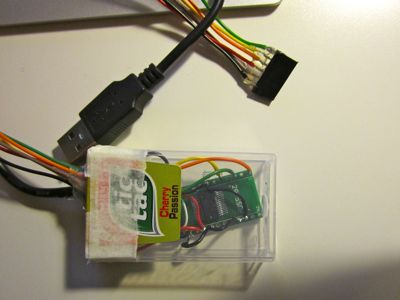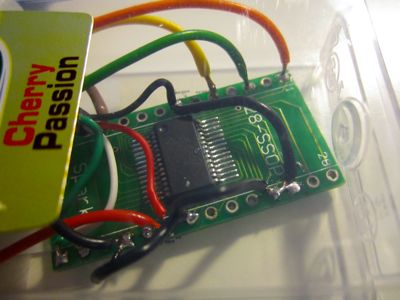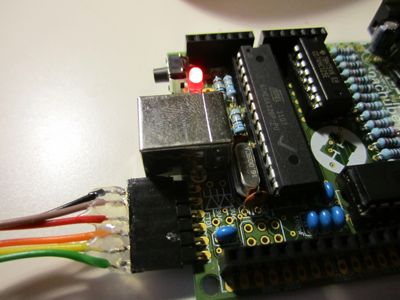Jun 9
2011
DIY USB-Serial Cable
Ever since I saw Minty Boost I knew that I wanted to make a small electronic device and put it in a funky case. Well, tonight I can finally sleep the untroubled sleep of one whose desires are fulfilled. Behold, the Tic Tac USB-Serial cable, Cherry Passion edition!
- Eat all the Tic Tacs.
- Assemble a USB Serial cable.
- Place the cable circuit board in the Tic Tac box. Add hot glue and masking tape for authenticity.
This uses the famous FTDI FT232RL chip to present a USB serial interface to a computer at one end, while presenting TTL-level serial lines on the other. I made mine mimic FTDI’s standard cable, with a 6-socket header at the TTL end. (It contains transmit, receive, power, and flow control lines.)
The chip itself is only available in various surface-mount formats, so I prudently circumvented a fine-wire-soldering nightmare (and ensuing insanity) by purchasing a a 28-pin SSOP breakout.
Soldering surface mount components is easier than people claim as long as you douse the area in flux first, a technique I learnt from electronics wizard Dave Snowdon.
Speaking of dousing things in other things, I hope you are appreciating the hot glue job I did here.
Here is the device programming a Nanode.
Click images for larger versions.



